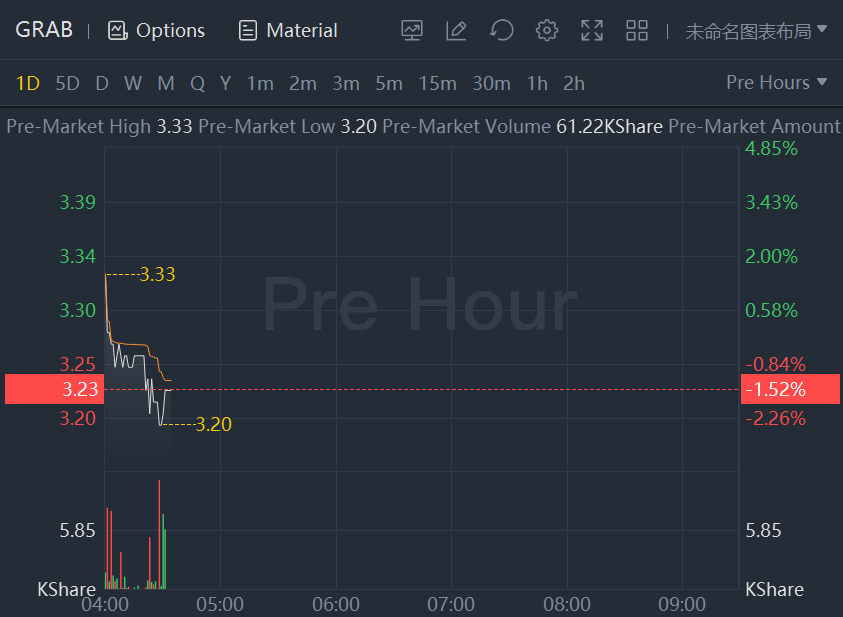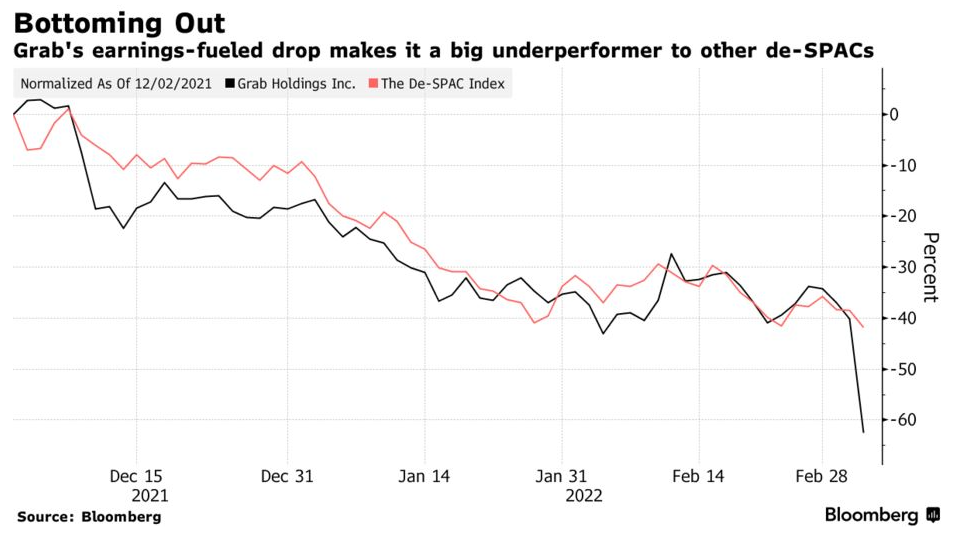Grab shares fell another 1.5% in premarket trading Friday after plunging 37% yesterday.
Grab Holdings Inc.’s stock plummeted 37% on Thursday after the company reported wider losses in the fourth quarter, pushing to $22 billion the decline in its market value since it went public through a merger with a blank-check firm in December.
Southeast Asia’s ride-hailing and delivery giant has plunged 63% since its debut, placing it among the Nasdaq Composite Index’s worst performers over that stretch. Thursday’s drop marked its biggest selloff ever after the Singapore-based company’s quarterly net loss nearly doubled from last year while revenue shrank 44%. The tumble came as 116 million shares changed hands, more than four-times the average over the past month.
Grab -- which counts SoftBank Group Corp.andUber Technologies Inc.as its two biggest shareholders -- has struggled to gain a steady footing since its merger with Brad Gerstner’s Altimeter Growth Corp. late last year. The ride-hailing company has racked up losses since its founding and Thursday’s report showed spending on growth is taking it further from profitability.
Its net loss reached $1.06 billion in the fourth quarter, compared with the consensus estimate of $645 million. Those mounting losses have led investors to flee the stock alongside other companies that have yet to turn a profit. Grab was the worst performer in the De-SPAC Index on Thursday as the basket of former special-purpose acquisition companies dropped 5.4% to a record low.
As the pandemic has weighed on ride-hailing demand, Grab has expanded its food delivery business to drive user growth. The online grocery market in Southeast Asia is expected to almost triple to $11.9 billion in 2025 from $4.1 billion in 2020, according to Euromonitor International.
But while spending by customers on Grab’s platform is increasing, the growth isn’t yet translating to earnings. Revenue booked from delivery last quarter was just $1 million. Grab deducts incentives that it offers to drivers and consumers from sales, and its quarterly revenue number fluctuates wildly depending on how much it spends on such efforts.
Its total spending on incentives more than doubled to $583.5 million in the fourth quarter. For 2021 as a whole, incentive spending soared to $1.78 billion from $1.24 billion the previous year.
“We did not expect Grab to spend on such huge incentives,” Shifara Samsudeen, an analyst at LightStream Research, said in a research report on Smartkarma. This implies the company is “struggling to grow its business and profitability seems like a tall order from Grab.”
Grab, founded by Anthony Tan and Hooi Ling Tan, has long been viewed as one of the most promising growth companies in Southeast Asia. Its business model is similar to that of Uber, the U.S. ride-hailing and delivery pioneer that sold its Southeast Asia operations to Grab in 2018.
Among Grab’s challenges is intensifying competition, including from Sea Ltd., Southeast Asia’s biggest internet company. More directly, its Indonesian ride-hailing rival, Gojek, merged with e-commerce provider PT Tokopedia to become GoTo. The combined entity is preparing for an initial public offering at home and in the U.S. this year.


